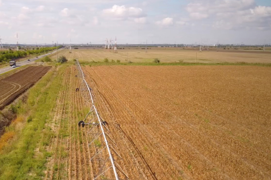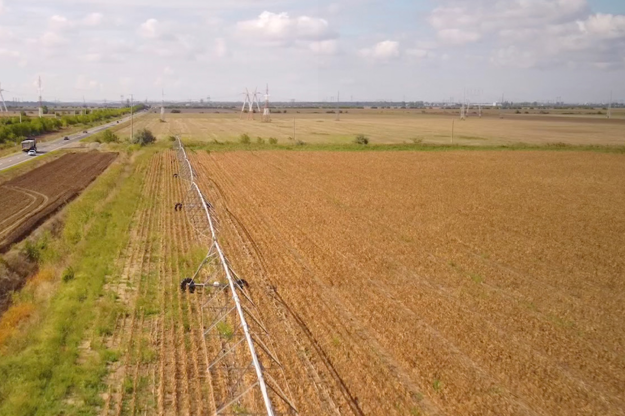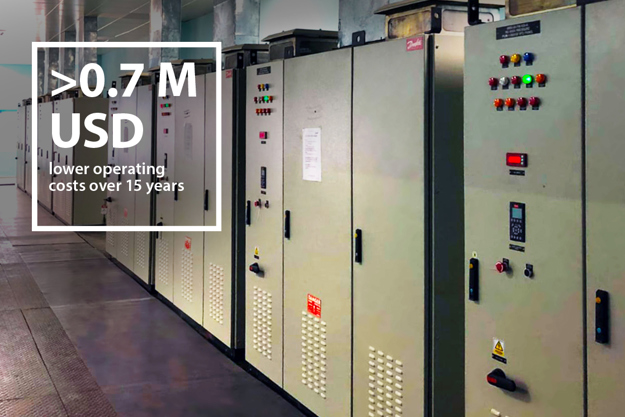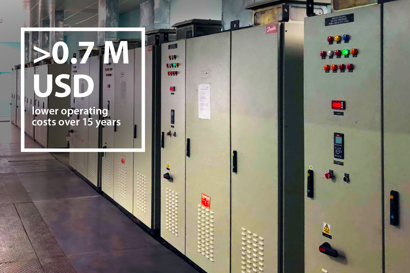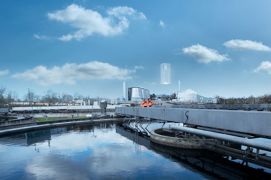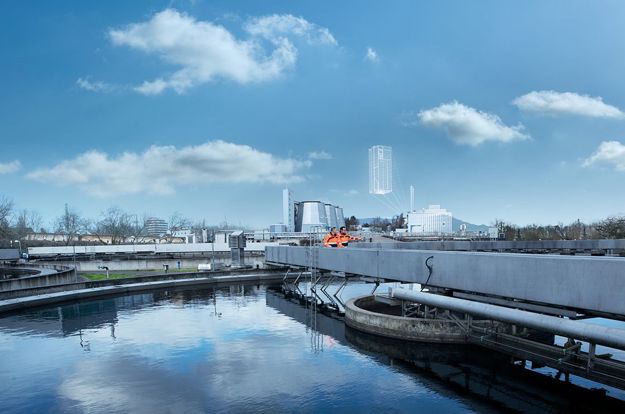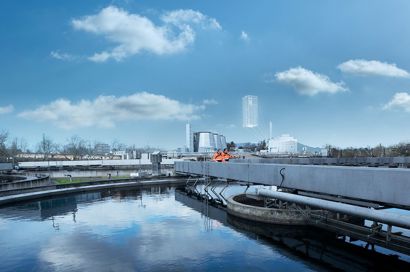POLAND: What do Indian elephants have to do with energy efficiency? Both are an integral part of the more than 2-hectare complex that provides protection for animal species of Southeast Asia. The animals bred at the Lodz Zoo Orientarium have 9 pools and 6 aquariums with total volume exceeding 5,800 m3 at their disposal.

Thanks to Life Support Systems (LSS), visitors to the Lodz Zoo Orientarium can admire sharks, gavial crocodiles, anoas, and Malay bears in close-to-natural conditions. The designers and builders of the LSS ensured animal comfort and safety, whilst also prioritizing climate protection and energy efficiency. Therefore, the LSS help to achieve optimal electricity and water consumption. Technologies used in the LSS systems had to meet stringent reliability and durability requirements in saltwater conditions, achieved by selecting high quality components such as VLT® AQUA Drive FC 202, built to operate in harsh environments.
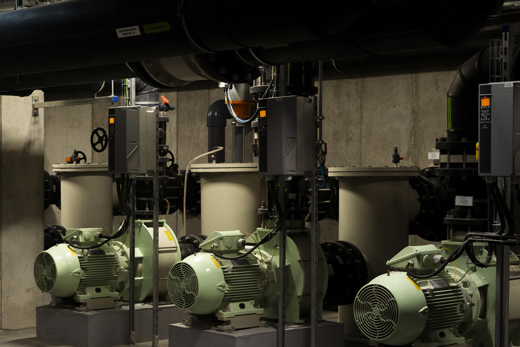
The challenge: Precision control of water quality
The main challenge facing the investment project was to provide the animals with a close-to-natural environment adequate for breeding. To achieve this, the Orientarium required life support systems (LSS) to control water parameters such as purity and salinity. The LSS also needed to stabilize gas balance, and control lime and phosphate concentration for coral reef environments.
Vital processes included mechanical filtration using separators to remove mechanical impurities from the water. Another example was 2-step biological filtration using nitrification and denitrification to remove ammonia and nitrogen from the water, with the aid of aerobic and anaerobic bacteria. Other processes included disinfection via ozone and UV light, and fresh and saltwater recovery systems. Saltwater requires dilution several times before being discharged to the sewage system.

The solution: Highly efficient pump control
An expert team comprising architects, specialists in the field of sanitary installations and biologists prepared a requirement specification for elements of the facilities, procedures, and technologies. Based on prior experience, they estimated the number of water filtering devices required. They also designed tanks able to control gas balance by maintaining adequate levels of oxygen and carbon dioxide.
Life support systems operate thanks to pumps transporting water between installations. Each pump is equipped with a VLT® AQUA Drive FC 202 unit, to control its operation. AC drives reduce energy consumption by adjusting the power at which the pumps operate to the exact load, based on filter contamination. The lower the contamination, the lower the pressure and resistance, and hence the pump power. VLT® drives operating at the Orientarium are protected by enclosures with ingress protection rating IP55, and an anti-corrosion coating on the electronic boards.
|
“Our installations use less electricity and water while providing animals with a close-to-natural environment. Thanks to AC drives, we can fulfill the core mission of the Zoological Garden, which is the protection of endangered species”. Łukasz Jędraszek, Head of Investment at Lodz Municipal Zoological Gardens |

The outcome: 50% less energy consumption
The systems installed by Danfoss partner Transcom meet customer expectations for water purification and quality by controlling the required parameters. The pumping station systems enable reuse of fresh and saltwater from filter rinsing, to reduce water consumption. Otherwise, the daily water consumption would reach 200 m3. Residual saltwater, which cannot be recovered, is diluted with rainwater collected in underground storage reservoirs.
VLT® AQUA Drive FC 202 reduces pump load to 60-80% of maximum, generating at least 50% reduction in energy consumption compared to systems not equipped with drives.
The contractor, Transcom, prioritized reliable operation and the longest possible warranty. Midway through the 9-year period, the AC drives will be inspected by Danfoss partners.

How do real time analytics work?
Our VLT® AQUA Drive is updated with the latest patented edge computing technology. Supporting high uptime for your facility and saving on operating costs, by supervising your motor and pumps. With the edge computing solution, data is collected several times per second, ensuring that any measurements outside the normal range trigger a warning, thus minimizing the risk of undetected abnormalities.
More installations using VLT® AQUA Drive FC 202
-
if (isSmallPicture) {


 How CAESB turned downtime risks into long-term operational reliability
How CAESB turned downtime risks into long-term operational reliabilityBrazilian water utility CAESB relies on DrivePro® services for planned maintenance and guaranteed response time to improve predictability in water management. Refurbished drives and upgraded units have extended the lifetime of their equipment, reduced the risk of downtime, and brought control to both operations and budgets.
-
if (isSmallPicture) {


 How did Sincrondraiv SRL improve irrigation pumping efficiency by up to 40%?
How did Sincrondraiv SRL improve irrigation pumping efficiency by up to 40%?ROMANIA: Digitizing irrigation systems helps farmers achieve better harvests. Pumping stations now use 30-40% less energy and use water more efficiently too.
-
if (isSmallPicture) {


 Carlsberg brewery drives down energy consumption
Carlsberg brewery drives down energy consumptionPOLAND: For more than a decade, Danfoss drives have reduced the power consumption at Carlsberg’s Okocim Brewery. The brewery uses less water and has lowered its emissions, too.
-
if (isSmallPicture) {


 Koyambedu: 22% reduction in energy consumption at wastewater treatment plant
Koyambedu: 22% reduction in energy consumption at wastewater treatment plantINDIA: By using VLT® AQUA Drive FC 202 from Danfoss, Koyambedu wastewater treatment plant has reduced its energy consumption significantly.
-
if (isSmallPicture) {


 Driving efficient life support systems at Lodz Zoo
Driving efficient life support systems at Lodz ZooPOLAND: The Lodz Zoo Orientarium uses high-efficiency VLT® AQUA Drive FC 202 to secure reliable water quality in life support systems for rare animal species.
-
if (isSmallPicture) {


 Marselisborg: A path to an energy neutral water sector
Marselisborg: A path to an energy neutral water sectorDENMARK: Marselisborg Wastewater Treatment Plant went from energy consumer to energy producer by using VLT® AQUA Drive FC 202 from Danfoss. Learn more about that here.




